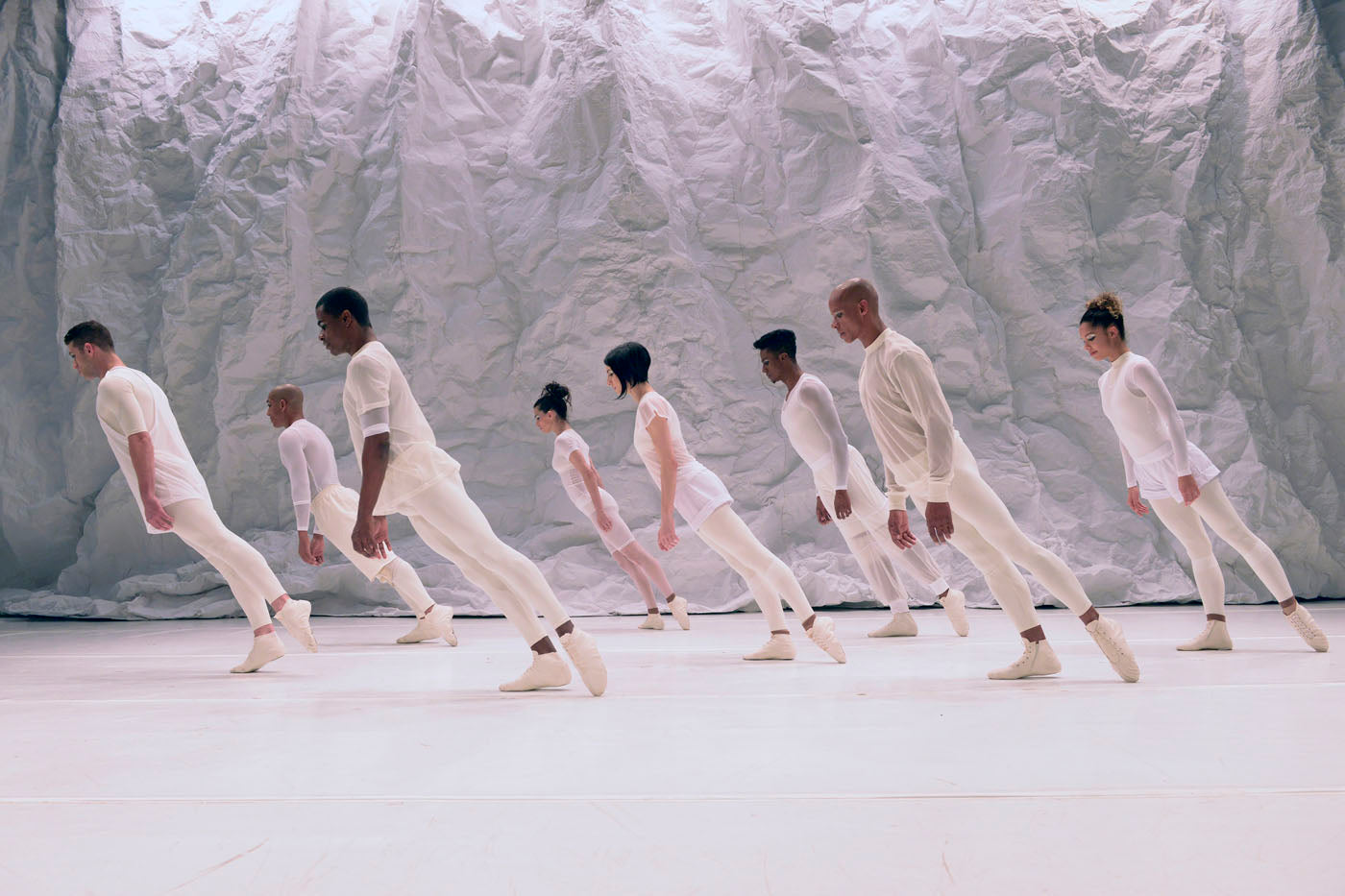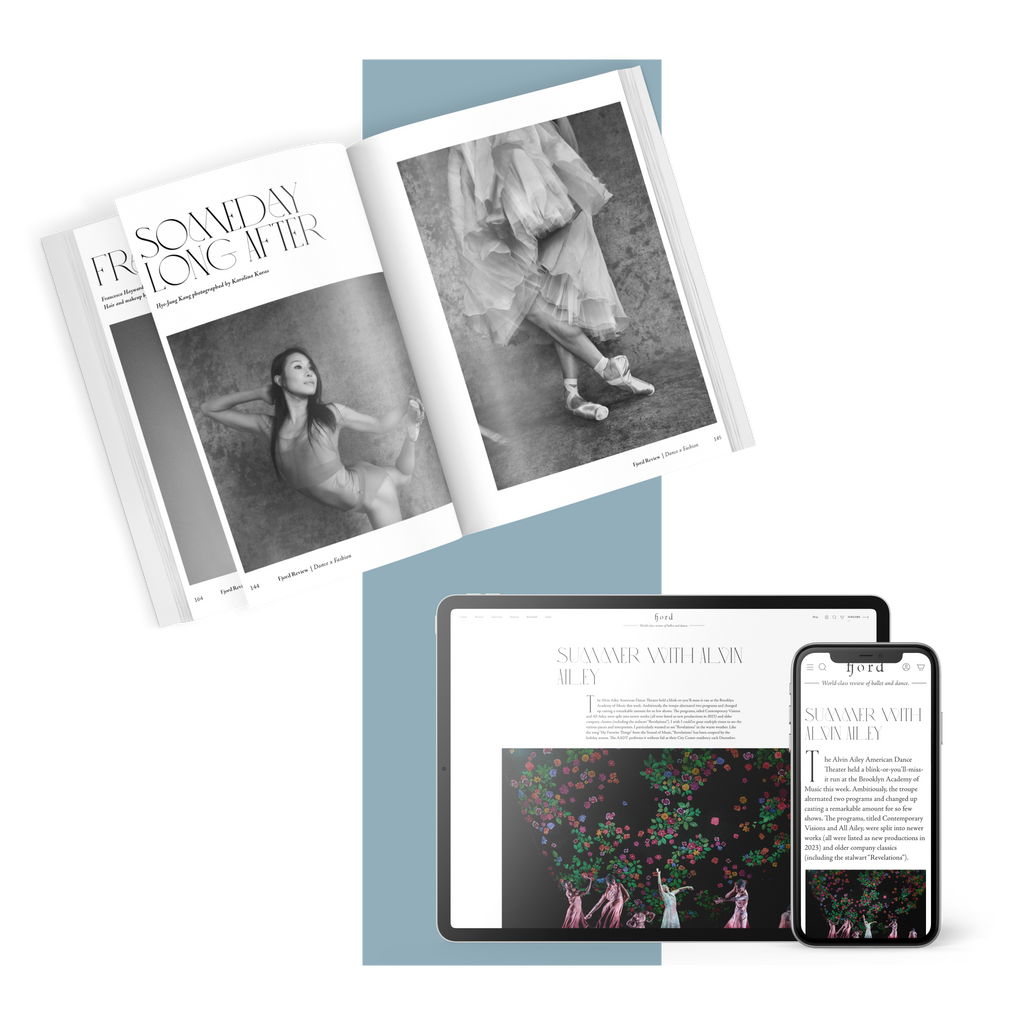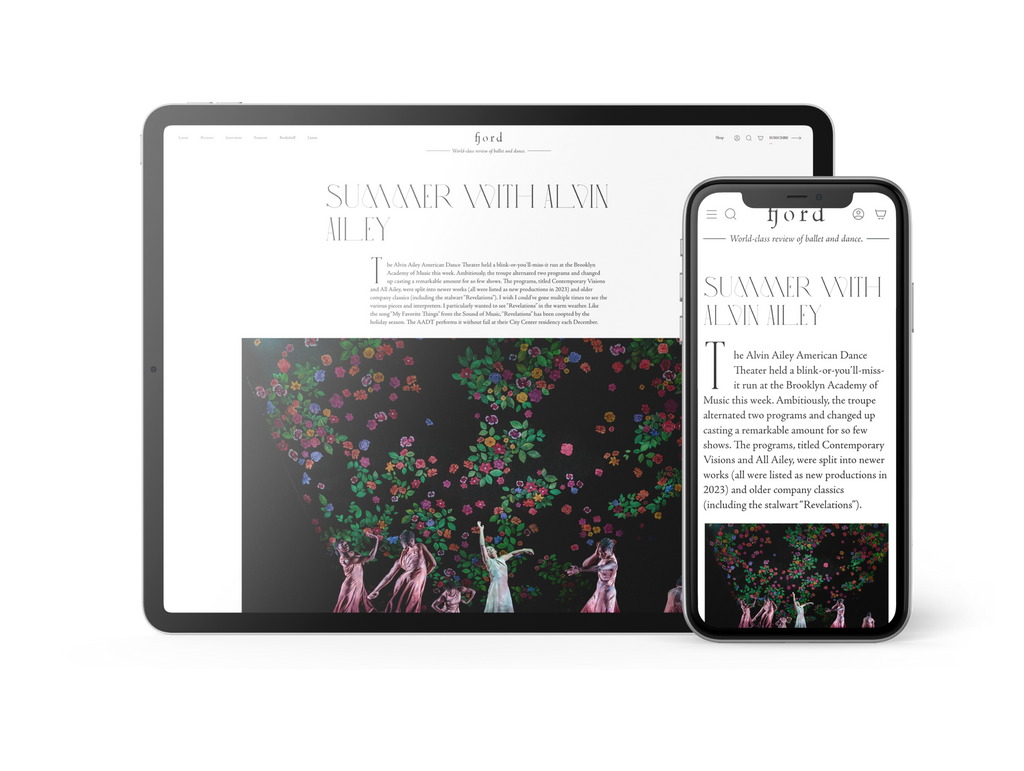“Suíte Branca,” choreographed by Cassi Abranches to music commissioned from Samuel Rosa, began with a dancer in white moving to the sound of a twangy distorted guitar. Soon, the music (a crystal-clear recording) became full and complex, combining funk and pop, vocals, and the rhythms of the Southern hemisphere (Rosa also heads the Brazilian rock band Skank). The dancers, dressed in variations on white sleeved tops, tights, pants, and jazz boots—the leather soft shoe helping realize steely pointed toes and balletic suppleness—appeared against a three-dimensional backdrop resembling crinkled white paper, or a sample taken from the icecap of a topographical map.
Though their movements were precise, instigated at the hip or shoulder and ending at a defined point, the dancers occupied this severe territory with warm blood. In shape-shifting patterns that defied our gestalt tendencies, the dancers were rhythmic gymnasts, tallying points for each miniscule pose, and they were capoeiristas, tossing themselves into the air, falling to the floor, and sailing over each other, landing with intentional control and soundlessness. These quiet landings conveyed otherworldliness—a memory of a dance for which the music can’t be recalled, a home movie for which the sound has been lost.
After intermission, “Dança Sinfônica,” choreographed by Rodrigo Pederneiras, began with the sound of the orchestra tuning up, a trompe l’oeil for the ear. By Marco Antônio Guimarães, the score was a delight, the strings pulsing behind questions posed and answered by brass and woodwinds, breaking into syncopation, waltzes, and soaring strings just when cathartic breaks were needed. This piece was deep red—slinky leotards, velvet-draped wings. Men, in black, walked backward, carrying in women who stood in their hands and gazed over their heads.
With a low center of gravity and fast footwork, “Dança Sinfônica” occupied a noisier place than that of “Suíte Branca:” the dancers stamped and stepped, performing combinations of embôiteés and sissonnes that built to a tarantella-like finale. There were rolling spines, deep, quick backbends, and periods of respite and reflection, such as a languid, shadowy sextet. A central couple, a man in black and a woman in light pink, each wearing a gold fingerless glove on one hand, performed an adagio. Afterward, he held her—she was curled up into a ball—and, collectively with a half dozen other dancers, leaned back and forth, rocking her. The next time she appeared, she had exchanged the pink leotard for a red one, seemingly having joined the group, but she changed back into vulnerable pink before the piece’s end.
I didn’t know what to make of this relationship story, but this didn’t bother me, because the company, in both works, exhibited partnering at its finest. Every set-down and landing was smooth and fluid. There was whipping around of the women, their legs swinging like those of gymnasts on the parallel bars, but these movements were always meticulously controlled, never grappling or violent. A few times, women were even tossed to the floor. The women capably tumbled into a roll to ease the impact, parkour style.
At the risk of committed biographical fallacy, one might suggest that the care in the dancing might have to do with the fact that Grupo Corpo is a family affair: the company was founded in 1975 by the six Pederneiras siblings. Now in their 50s and 60s, they are all still involved with the company in some way. For example, in addition to choreographer Rodrigo, there is Paulo, the artistic director, and his son Gabriel, who collaborates with Paulo on lighting design. Abranches was a company dancer for thirteen years. At the end of “Dança Sinfônica,” the lights go up on a backdrop, revealing it to be a collage of photos—a family album.









comments